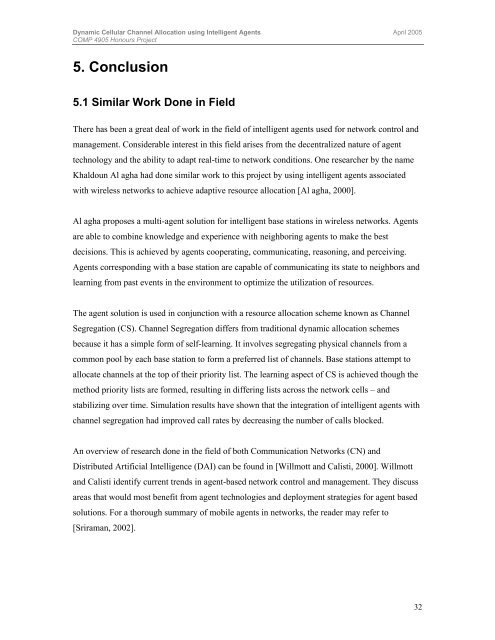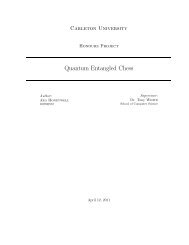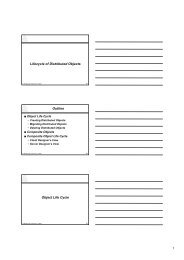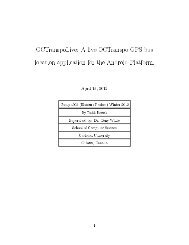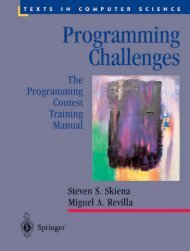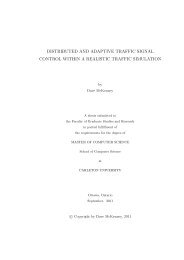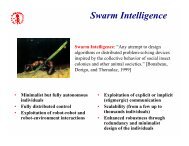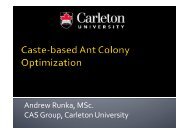Gayan Abeysundara - Complex Adaptive Systems Group
Gayan Abeysundara - Complex Adaptive Systems Group
Gayan Abeysundara - Complex Adaptive Systems Group
You also want an ePaper? Increase the reach of your titles
YUMPU automatically turns print PDFs into web optimized ePapers that Google loves.
Dynamic Cellular Channel Allocation using Intelligent Agents April 2005COMP 4905 Honours Project5. Conclusion5.1 Similar Work Done in FieldThere has been a great deal of work in the field of intelligent agents used for network control andmanagement. Considerable interest in this field arises from the decentralized nature of agenttechnology and the ability to adapt real-time to network conditions. One researcher by the nameKhaldoun Al agha had done similar work to this project by using intelligent agents associatedwith wireless networks to achieve adaptive resource allocation [Al agha, 2000].Al agha proposes a multi-agent solution for intelligent base stations in wireless networks. Agentsare able to combine knowledge and experience with neighboring agents to make the bestdecisions. This is achieved by agents cooperating, communicating, reasoning, and perceiving.Agents corresponding with a base station are capable of communicating its state to neighbors andlearning from past events in the environment to optimize the utilization of resources.The agent solution is used in conjunction with a resource allocation scheme known as ChannelSegregation (CS). Channel Segregation differs from traditional dynamic allocation schemesbecause it has a simple form of self-learning. It involves segregating physical channels from acommon pool by each base station to form a preferred list of channels. Base stations attempt toallocate channels at the top of their priority list. The learning aspect of CS is achieved though themethod priority lists are formed, resulting in differing lists across the network cells – andstabilizing over time. Simulation results have shown that the integration of intelligent agents withchannel segregation had improved call rates by decreasing the number of calls blocked.An overview of research done in the field of both Communication Networks (CN) andDistributed Artificial Intelligence (DAI) can be found in [Willmott and Calisti, 2000]. Willmottand Calisti identify current trends in agent-based network control and management. They discussareas that would most benefit from agent technologies and deployment strategies for agent basedsolutions. For a thorough summary of mobile agents in networks, the reader may refer to[Sriraman, 2002].32


